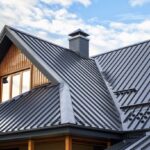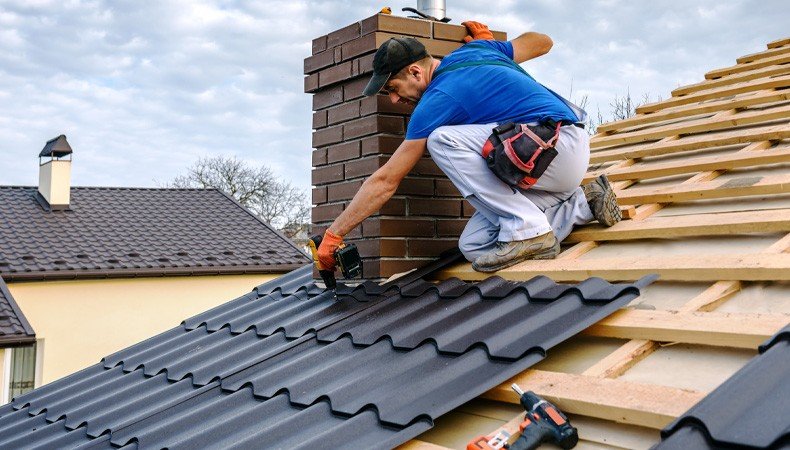
How Much Does a Metal Roof Cost in Staten Island? Learn About Pricing and Installation
July 14, 2025How Much Does a Metal Roof Cost?
July 30, 2025Why Vinyl Siding Is Still a Top Choice for Homeowners
When choosing a siding material, durability is one of the most critical factors. That’s why vinyl siding remains a favorite among homeowners in Staten Island, NY, and beyond. It’s affordable, attractive, and surprisingly long-lasting.
Still, many homeowners wonder: how long does vinyl siding last in real-life conditions?
This article provides a detailed, fact-based answer to that question. We explore what impacts siding lifespan, how to maintain it, and what to expect during installation. If you’re considering vinyl siding, this guide will help you make the right decision and extend your home’s exterior life.
What Is Vinyl Siding? A Brief Overview
Vinyl siding is an exterior cladding made primarily of polyvinyl chloride (PVC), with additional ingredients that enhance its strength and UV resistance. It is available in many styles, including horizontal lap, vertical panels, shingles, and even wood-look textures.
Unlike wood or fiber cement, vinyl does not rot, peel, or require repainting. These advantages have made it one of the most commonly used siding materials in the United States.
According to the Vinyl Siding Institute, vinyl siding covers over 30% of American homes, and it’s especially common in Northeastern regions like New York.
So, How Long Does Vinyl Siding Last?
On average, vinyl siding lasts 20 to 40 years, with high-quality materials and professional installation extending that to 50 years or more.
However, many factors influence its actual lifespan, including:
-
Climate and weather exposure
-
Installation techniques
-
Vinyl quality and thickness
-
Maintenance and cleaning habits
According to Consumer Reports, thicker, premium-grade vinyl can last up to 60 years in moderate climates. In harsh environments, the lifespan tends to be shorter, especially with cheaper materials.
Expert Insights on Vinyl Siding Longevity
“Vinyl siding is one of the best investments for homes in the Northeast. With proper care and installation, it can last several decades.”
— Paul Simmons, Building Envelope Consultant at American Institute of Building Design (AIBD)
“Improper installation is the biggest threat to vinyl siding. Always hire a local contractor familiar with your region’s weather.”
— Karen Wallace, Exterior Design Specialist, Staten Island, NY
Factors That Affect Vinyl Siding Lifespan
1. Quality of the Vinyl Material
Not all vinyl is created equal. The best siding is .044 to .055 inches thick, with added impact resistance and UV stabilizers. Cheaper alternatives may fade, warp, or crack after 10 to 15 years.
Look for products certified by the Vinyl Siding Institute (VSI) to ensure top performance standards.
2. Professional Installation
Incorrect nailing, poor ventilation, and improper overlaps can cause premature failure. Always choose a licensed, experienced contractor—like Best Roof Contracting in Staten Island—to ensure the siding can expand and contract properly with the seasons.
3. Climate and Environmental Conditions
Staten Island’s climate presents unique challenges. High humidity, coastal air, and seasonal storms increase wear and tear. UV rays can fade siding, while freeze-thaw cycles may cause cracking if the panels aren’t installed correctly.
4. Maintenance and Upkeep
While vinyl siding is low-maintenance, it’s not maintenance-free. Annual cleanings and periodic inspections can drastically extend its life. Mold, mildew, or algae buildup can break down the surface over time if left untreated.
Vinyl Siding Lifespan in Different Climates
| Region | Expected Lifespan | Notes |
|---|---|---|
| Northeastern U.S. | 25–40 years | Cold winters and salt air increase risk of cracking and fading. |
| Southern U.S. | 30–50 years | UV exposure is higher, but winters are mild. |
| Midwest | 20–35 years | Extreme weather shifts reduce lifespan. |
| Western U.S. | 35–60 years | Mild climate helps siding last longer. |
How to Extend the Life of Your Vinyl Siding
To ensure your siding reaches its full potential, follow these tips:
-
Wash it once a year using soft brushes or a garden hose. Avoid pressure washers unless you’re using low settings.
-
Inspect seams and edges for cracks or loose panels every spring and fall.
-
Keep landscaping trimmed, especially trees or shrubs that rub against the siding.
-
Use UV-protective sealants if your siding isn’t pre-treated.
-
Avoid placing grills or fire pits near walls, as heat can warp panels.
Signs It’s Time to Replace Your Vinyl Siding
While vinyl siding is long-lasting, it won’t last forever. Common signs of deterioration include:
-
Fading that exposes underlayers
-
Buckling or bulging panels
-
Cracks or visible holes
-
Water stains on interior walls
-
Higher heating or cooling bills
If you notice these issues, call a professional for an assessment. A full replacement might be more cost-effective than repeated repairs.
Understanding the Installation Process
At Best Roof Contracting, we follow a five-phase vinyl siding installation procedure to ensure maximum durability:
Phase 1: Site Evaluation and Consultation
We inspect your home’s exterior, look for rot or damage, and help you choose the best siding material and color.
Phase 2: Surface Preparation
We remove any old cladding, repair sheathing if needed, and install a moisture barrier or house wrap.
Phase 3: Starter and Trim Installation
Starter strips, J-channels, and corner posts are installed to align and secure the panels.
Phase 4: Panel Installation
Vinyl panels are installed with proper spacing to allow for thermal expansion. Nails are placed correctly to prevent warping.
Phase 5: Final Inspection and Cleanup
We inspect every joint, edge, and panel to ensure perfection. The job site is cleaned, and warranties are reviewed with you.
Cost vs. Lifespan: Is Vinyl Siding Worth the Investment?
Yes. Vinyl siding is one of the most cost-effective cladding options available today. Here’s why:
-
Lower upfront cost than brick or fiber cement
-
Minimal maintenance over decades
-
Long warranty periods, often 20–40 years
-
Strong ROI: Homes with updated vinyl siding often sell for more
According to Remodeling Magazine’s 2024 Cost vs. Value Report, homeowners who upgrade to vinyl siding recoup over 82% of the project cost when selling.
Comparing Vinyl Siding to Other Options
| Material | Average Lifespan | Maintenance Needs | Cost (per sq. ft.) |
|---|---|---|---|
| Vinyl Siding | 20–50 years | Low | $3 – $8 |
| Fiber Cement | 30–50 years | Medium | $6 – $12 |
| Wood Siding | 15–30 years | High | $7 – $14 |
| Stucco | 50+ years | Medium | $8 – $15 |
| Aluminum Siding | 20–30 years | Medium | $5 – $9 |
Vinyl siding offers the best mix of lifespan, aesthetics, and value for homes in the Staten Island area.
Final Thoughts: How Long Does Vinyl Siding Last?
To summarize: vinyl siding can last 20 to 50 years, depending on installation quality, maintenance habits, and local conditions. In Staten Island’s coastal climate, homeowners can expect well-installed siding to last around 30 to 40 years.
Choosing a certified, local contractor like Best Roof Contracting ensures your investment is protected. We use industry-best materials, adhere to VSI standards, and guarantee satisfaction on every siding project.



